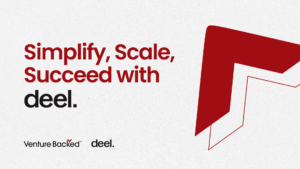Despite 90% of startups failing, starting a business is more accessible than ever, thanks to streamlined policies and the use of digital tools that enhance operations and brand visibility. Investors are drawn to startups that are scalable and ready to grow. But what exactly does that mean?
In simple terms, it means your business is set to significantly boost revenue with little extra cost. Being ready to scale means you’ve got a product and business model that are both tested and ready to take on new markets. Scaling a business requires a profitable idea, a growth strategy, and a strong value proposition, along with the latest technology.
If you’re an HBCU entrepreneur looking to take your startup from idea to market validation, this article is for you. We’ll guide you through the essential steps, from validating your product-market fit to preparing your business for scalable growth. Let’s get started!

Understanding Scalability and Scalable Startups
Before we dive in, let’s define the key terms we’ll be using throughout this blog. Understanding these terms will help you grasp what it takes to build a startup that’s ready for serious growth:
What is Scalability?
Scalability is about a business’s ability to expand smoothly without being overwhelmed by growth.
It’s about maintaining or even improving efficiency and profitability as your business expands. In today’s tech-driven world, scalability has become increasingly important because it allows businesses to reach more customers and operate more efficiently.
The Challenge of Scalability
As a business grows, it can be tough to keep efficiency and profitability on track. But that’s exactly what’s needed to stay stable and successful.
Investors and other stakeholders look for this growth, as it means more opportunities and profits. To prepare, businesses should set up systems that can handle growth without losing their edge.
Scalable Startups
A scalable startup begins with a big, innovative idea and a business model designed to grow quickly into a major player. These startups enter large markets, carve out a niche, and often become fierce competitors to established businesses.
They’re built to grow fast, even with limited resources, and aim not just to create products, but to shape entire industries. Scalable startups are often spotted early by seasoned industry players and may attract buyout offers due to their unique potential.
Unlike small businesses that may grow slowly or plateau, scalable startups are designed to expand rapidly and dominate their market. They have a vision and model that set them apart from day one, aiming for growth that goes beyond their immediate industry and competition.
Understanding Market Validation and Product-Market Fit
When starting a new venture, two terms you’ll often hear are “market validation” and “product-market fit.” But what do these phrases really mean, and why are they so crucial to your startup’s success? Let’s break it down in simple terms:
Market Validation
Market Validation is the process of proving that your business idea has a market—that is, people are willing to pay for your product or service.
It’s like checking whether there’s enough interest in your idea before you dive in deep. This step saves you time, effort, and resources by helping you avoid investing in a product no one wants.
Product-Market Fit
Product-Market Fit occurs when your product satisfies a strong market demand. It’s the sweet spot where what you’re offering aligns perfectly with what customers actually want and need.
Achieving this fit is a key indicator that your business is on the right track to long-term growth.
Why They Matter
Without market validation, you might as well be shooting in the dark. You could have the most innovative product, but if no one needs it, it won’t sell. Validating your market ensures you’re not just creating a solution looking for a problem but actually solving a real issue that people care about.
Product-market fit is crucial because it’s about making sure your product not only fits into the market but does so in a way that resonates strongly with your target customers. It’s about fine-tuning your offerings to meet actual customer behaviors and preferences, which can dramatically boost your startup’s chances of success.
Laying the Groundwork – From Idea to Product Development
In this section, we’ll talk about the exciting journey of turning your big idea into a tangible product. We’ll cover everything from brainstorming and refining your concept to building the right team that will help bring your vision to life.
Idea Generation
Every great startup begins with a strong idea. But how do you come up with one that’s viable? Start by brainstorming—gather a few creative minds, throw out ideas, and don’t be afraid to think outside the box.
Look for gaps in the market, unmet needs, or problems that people face regularly. The best ideas often come from solving real-world issues that others often overlook.
Concept Refinement
Once you’ve landed on a promising idea, it’s time to refine it. Initial feedback is gold—talk to potential customers, industry experts, or even friends and family. Use their insights to tweak and polish your concept.
Market research is crucial here; it helps you understand your audience and fine-tune your idea to better meet their needs. Another thing to remember is that a good idea becomes great through continuous improvement.
Building the Team
No startup can thrive without the right team. Assemble a group of people who bring diverse skills and perspectives to the table. After all, 23% of startups cite team issues as a key factor in their failure, so getting this part right is crucial.
Look for individuals who are not only talented but also passionate about your vision. A well-rounded team with expertise in different areas—like marketing, technology, and finance—can turn your idea into a fully-fledged product.
Plus, a team that works well together is more likely to navigate the ups and downs of startup life successfully. By laying this solid groundwork, you’re setting your startup up for success from the very beginning.

Techniques for Conducting Market Research and Validation
Conducting effective market research is your first real interaction with the potential market. Here’s how you can do it right:
- Surveys and Questionnaires: Reach out directly to potential users with surveys that ask specific questions about their needs, preferences, and pain points. Tools like SurveyMonkey or Google Forms can be helpful here.
- Interviews: Conduct one-on-one interviews to dive deeper into the insights you might have gathered from surveys. These can provide a nuanced understanding of your customers’ needs.
- Competitive Analysis: Study your competitors. What are they doing well? Where are they lacking? This can help you identify an untapped niche or improve on existing solutions.
- Observational Research: Sometimes, observing potential users in their natural environment can give you insights that structured research cannot. This can be especially useful for products related to physical tasks or workflows.
- Prototype Testing: If you have a physical product, getting a prototype into the hands of potential customers can be incredibly valuable. Their reactions and how they use the product can guide your development.
Building a Minimum Viable Product (MVP) and Gathering User Feedback
An MVP is the simplest version of your product that allows you to start the learning process as quickly as possible. We’ve listed top three easy steps on how to approach it:
- Focus on Core Features: Identify the absolute essentials that solve the core problem for your customers. Avoid the extras until after you’ve validated these core features.
- Develop and Launch Quickly: The goal of an MVP is not perfection. It’s to get a basic, working model out to your customers to start the feedback loop.
- Gather and Analyze Feedback: Use customer feedback to understand if the MVP truly meets their needs and what improvements are necessary. This feedback will be crucial to refine your product.
Preparing for Scale: Identifying and Addressing Growth Barriers
Scaling your business involves more than increasing sales; it requires careful management of growth to ensure long-term success.
It’s important to identify potential challenges early and address them proactively. This includes upgrading systems, optimizing operations, securing finances, hiring the right people, and ensuring your customer service can handle increased demand.
Here’s how you can prepare:
- Infrastructure: Assess whether your current infrastructure can handle increased demand. If not, what needs to change?
- Process Optimization: Look for bottlenecks in your processes and find ways to automate or streamline them. Efficient processes are crucial to scale smoothly.
- Financial Planning: Ensure you have the financial resources to support growth. This might mean securing additional funding or revising your pricing strategy.
- Talent Acquisition: As you grow, you’ll need more hands on deck. Plan your hiring strategy to ensure you have the right skills in your team at the right time.
- Customer Support: Scaling often leads to a larger customer base, which can strain your support resources. Consider how you’ll scale your customer service capabilities.
Each of these steps is integral to building a startup that’s not just successful at launch but continues to thrive as it grows. Keep it simple, stay user-focused, and remember that preparation today lays the groundwork for success tomorrow.
Your Next Steps Towards Startup Success
For HBCU entrepreneurs and startup founders, the journey is not just about launching a business but creating a scalable entity that promises significant growth with minimal additional costs. By understanding and executing market validation and product-market fit, you position your startup at the forefront of potential scalability.
To all budding entrepreneurs at HBCUs, your journey is just beginning. Use your unique insights and skills, utilize the resources available, and set your sights on not just entering the market, but conquering it.
Let’s innovate, impact, and inspire together. Join Venture Backed, the premier platform for empowering entrepreneurs with tools, insights, and opportunities tailored for explosive growth. Connect with investors, service providers, and other members of the venture capital ecosystem on a single platform now.






